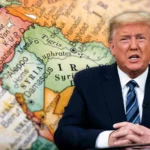Tensions between India and Pakistan have sharply escalated following a brutal militant assault in Pahalgam, located in Indian-administered Kashmir. The attack, which killed 26 people including Indian and Nepalese nationals, has not only reignited long-standing hostilities but also pushed diplomatic ties to a new low. As both countries exchange fire across the Line of Control (LoC), global concern mounts over the possibility of a wider military confrontation between these two nuclear-armed rivals.
A History Marked by Wars and Ceasefires
The roots of the India-Pakistan conflict trace back to the 1947 Partition of British India, which created the separate nations of Hindu-majority India and Muslim-majority Pakistan. The princely state of Jammu and Kashmir became the focal point of dispute when its monarch acceded to India in exchange for protection against invading forces. This decision triggered the first Indo-Pakistani war and led to the 1949 Karachi Agreement, which established a temporary ceasefire line under UN supervision.
Over the decades, tensions have regularly flared. The wars of 1965 and 1971, the latter leading to the creation of Bangladesh, cemented the rivalry. With India’s nuclear test in 1974 and Pakistan’s in 1998, the conflict entered a far more dangerous phase.
In the late 1980s, Pakistan-backed insurgency in Indian Kashmir reignited violence. This culminated in the 1999 Kargil conflict, where Pakistani troops crossed the LoC. Since 2003, a formal ceasefire has held in name, but frequent skirmishes, shelling, and militant attacks have kept the region on edge.
Major incidents like the 2008 Mumbai attacks and the 2016 Uri army base assault further strained relations. In retaliation to the Pulwama bombing in 2019, India conducted airstrikes inside Pakistan, which led to an aerial confrontation and the capture of an Indian pilot.
The revocation of Article 370 by India in August 2019, stripping Kashmir of its special autonomy, deepened the divide. Pakistan viewed the move as a provocation and a violation of Kashmiri rights. India’s growing Hindu nationalist agenda and increased military deployment in the region only added fuel to the fire.
2025: A Dangerous New Chapter
The recent April 2025 Pahalgam attack marked the most devastating act of terror on Indian soil since the 2008 Mumbai siege. While India blamed Pakistan-based militants and detained two Pakistani nationals, Islamabad denied involvement, even labeling the incident a possible “false flag operation.” A group calling itself the Kashmir Resistance, reportedly linked to Lashkar-e-Taiba, claimed responsibility.
India’s response was swift and severe. It suspended the Indus Waters Treaty, ended a long-standing visa-free travel agreement, and sealed border crossings. Pakistan retaliated by closing its airspace to Indian flights, halting trade, and suspending visa arrangements. Both nations downgraded diplomatic ties and ramped up military activity along the LoC.
Daily exchanges of fire have resumed, civilian casualties have increased, and both sides accuse the other of ceasefire violations. In Kashmir, India launched a wide-scale crackdown, arresting over 1,500 people and demolishing suspected militant hideouts.
Meanwhile, the international community has voiced concern. The United States and China have urged restraint, with Beijing demanding an independent investigation into the incident. Fears of a full-scale war were further amplified when Pakistan’s defense ministry claimed an Indian attack on its territory was imminent.
As both militaries remain on high alert, and nationalistic rhetoric rises, the risk of escalation into open conflict looms large. What began as a regional militant strike has spiraled into a potentially volatile standoff between two of South Asia’s most powerful nations.



